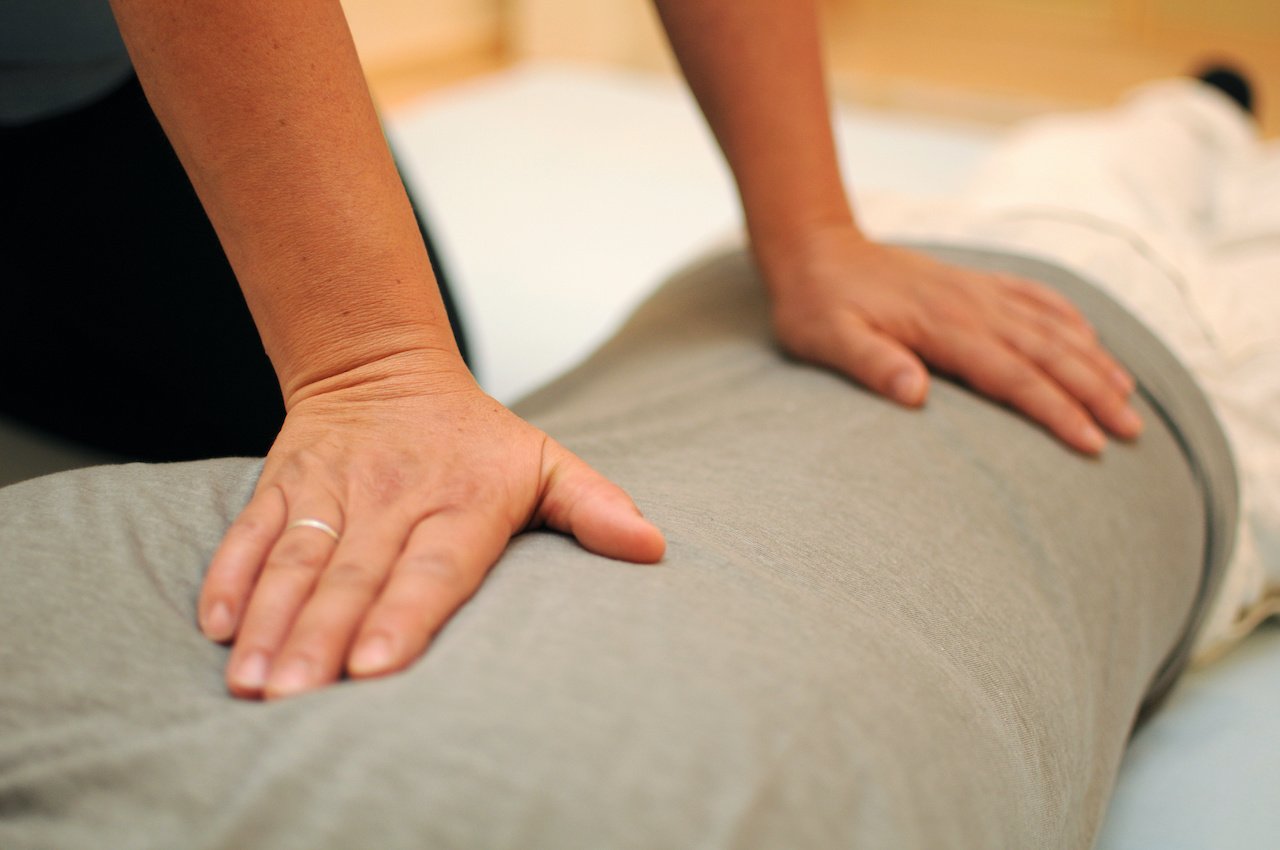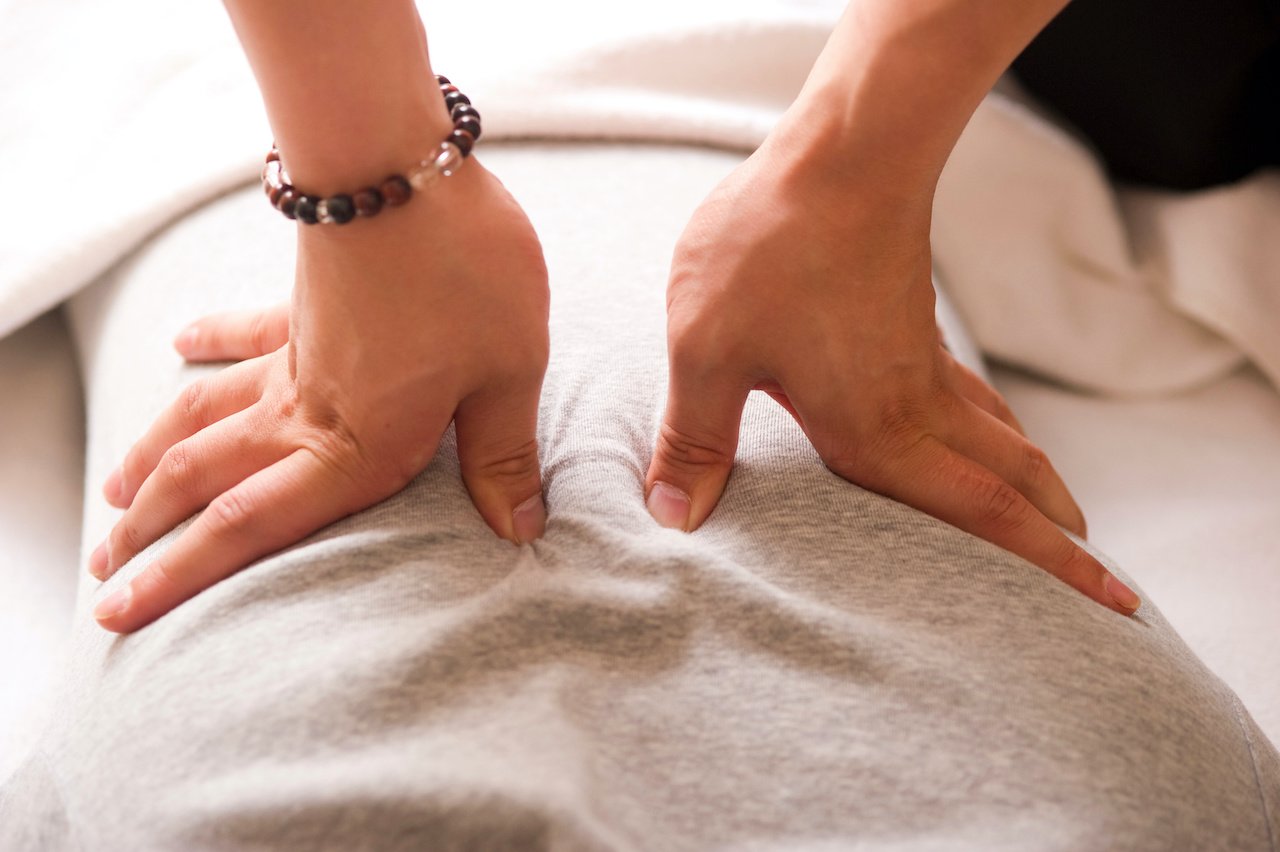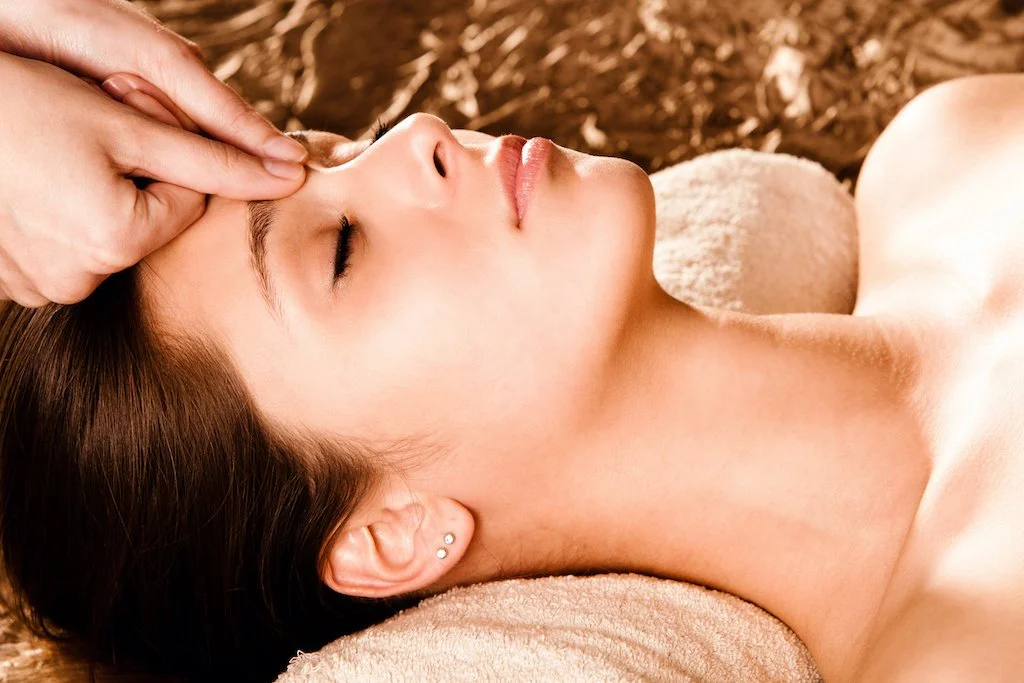What exactly goes on during a shiatsu session?
Satisfying the curiosity of people who’ve never had a bodywork session with me (… as well as many who have…!)
I should first mention here that my work is not a universal example of shiatsu.
As with many disciplines, there are a number of schools of theory, and each practitioner will bring all their own wisdom and experience to the work.
My approach can vary from session to session - even for each time I see the same client - as I am largely meeting that person where they are, from where I am, and bearing witness to what is emerging at that time.
And now, a general overview of a 'shiatsu bodywork session with Gina'. :)
In the beginning.
Intake and preparation.
Upon scheduling for the first time, I gather some basic information about the person, why they are coming, and a little personal/life background. I will also let them know this is a clothed session*, suggest they don’t eat too heavily before the appointment, as well as inquire whether they prefer the massage table, or a mat on the floor.
(*Shiatsu is traditionally given with the receiver clothed, both for modesty as well as to allow some of the deeper stretch positions. I try to make it a point to specify bringing or wearing loose, comfortable clothing, rather than just ‘keep clothing on’, which for many people includes jeans, complicated blouses and other tight garments.
Changing into more fluid clothing not only allows for more mobility and deeper pressure, but also demarcates this time as a space for self-care and attention to the body.)
Storytime.
Before beginning the session, we take time for sharing what’s going on in the client’s world, what they theorize or feel might be contributing to any discomfort, answering questions they might have for me, and perhaps setting an intention for the session.
While I typically don’t take on the role of ‘repair person’, I do take into account what is at the forefront of the client’s awareness, and bring that into the context of what I’m seeing and feeling - both before and during the session.
“How do you want to start?”
Unless I’m getting a strong hit of where to begin, I like to give the client the opportunity to voice how they’d like to start the session: face up, face down, what’s calling to be touched first, etc.
It’s interesting, and not at all surprising, that many people prefer not to choose (instead, leaving it to me - in their words - the ‘expert’), especially if they’re quite tired of having to make decisions.
However, my question is coming more as an invitation for them to check in with their body - not their brain - which can give delightful, even surprising, suggestions when given the opportunity to take part in the conversation. We spend a lot of time analytically chewing on our stories of 'how we are’, drafting the laundry list of to-do’s we want to bring to the therapist - all the while overlooking what our bodies are trying to communicate on their own behalf.
Spending just a moment in quiet awareness to consider ‘what does my body want/need/crave in this moment’ and then asking for that can actually be quite liberating for the overworked noggin, and much more effective for the session.
Initial contact.
If the client is starting face down on the table or mat, my first touch will usually be on the spine - one hand between the shoulder blades, the other on the low back.
Or, I might place both hands on the upper back. This can feel very calming and supportive - offering a direct communication of support to the nervous system, and giving me a moment to sense their breathing, as well as breathe along with them.
If they begin face up, I might choose one of several starting points: their head, feet or abdomen.
A lot of this depends on their state of ease (or lack thereof) at the beginning of the session.
Some folks come in very chatty, or amped up from work, traffic, life stress - in which case, I’ll support them in the transition to the present moment by rubbing their feet, rotating the ankle joints, gently tractioning and rolling the legs.
If neck and shoulder tension is mentioned, I will likely start there, with my hands under the occiput, also with a little traction to feel into the shoulders and spine.
If they are already receptive to the slower pace of this time, I will place my hand on the lower abdomen, and feel for the breath and ease here. I might also continue with abdominal (hara) palpation, for a sense of where to move from there.
The session.
At this point, the session can progress in a number of directions.
With a broad, soft focus, and sensitive touch, I take into account:
the state of ease or overall tension in the receiver’s body/breathing/mind;
a particular intention or experience expressed by the receiver;
a sense of coherence (or lack thereof) in the receiver’s body, as revealed by the quality of Qi flow, a holding of tension, a disharmony in structural alignment, a lack of movement in an area.
My approach will then focus on or include:
Targeted, gentle stretches to feel for and encourage a sense of continuity and connection between the limbs and the torso, as well as encourage deep relaxation;
Palm or finger pressure along points and meridians* to also encourage continuity, release excessive or stagnant Qi, or invite Qi into ‘empty’ places;
Joint rotations to explore the relationships between bony parts (joints can be areas of held tension, expression and life force energy…);
Slow, relaxed fascial tractioning and unwinding (fascia is the primary organ of inter-connectedness within the body, the pathways of the meridians and a storage place for all kinds of emotions and gestures.);
Abdominal (hara) palpation and massage (the ‘hara’, as this area is called in Japanese, is the energetic ocean of Qi in the body, and where the tone of all the Organs can be discerned. It’s also physically an area where we tend to hold a lot of tension);
Spinal palpation, vertebral and rib cage rocking, and occasionally, muscle release techniques to bring freedom and mobility to the spine, encourage greater lung capacity and support hip alignment;
Passive cues, stretches and held positions to invite ease and release to the psoas muscles, or other chronically-tense areas.
A mini ‘opening’ segment.
Other things I’m noticing and responding to or holding space for:
‘Shifts’ in the proprioceptive awareness of the receiver (sometimes this presents as a delicious exhale, or a sense of ‘melting’, ‘floating’, or greater spaciousness in the room);
Conversely, a more ‘surface’ presence: ‘chattiness’, hyper-focus on the mechanics of the treatment and other mental activity, a sense of ‘warding off’, ‘checking out’, disconnecting, or falling deeply asleep;
(Note: Falling asleep is not always a sign of disconnection, nor a state to fight against. Experiencing deep, restful sleep is elusive to so many, as we’re just so overrun and exhausted. But, it can also suggest an inability or avoidance to be present to the subtle and valuable cues and sensations of the body in response to healthy human touch.)
Overall, my intention not really about ‘trying to get the body to do x, y, z…’, and that includes relaxing.
It’s more about introducing possibilities for self-awareness, change, expansion and integration - both consciously and below the mental radar.
In closing.
With the awareness of filling the time agreed upon, I do try to bring the session home with a sense of ‘completion’.
As we end, I will encourage the receiver to relax for a few moments before getting right up.
This is rather important, and can make a difference in how one re-enters life and carries the benefits of the session into their day - with clearer awareness and presence in the moment, or simply snapping back into unconscious habits and response.
This in-between space is a graceful pause, wherein one can make a conscious choice to influence the trajectory of the day.
Takeaways.
Whether you have the opportunity or desire or not to receive a shiatsu session, there are still pieces you can infuse into your own self-care practices and life.
Pause on occasion to inquire, “How am I right now?”, but shift your focus from your analytical story to what your body is expressing in the moment. You may have overlooked your body’s signals for water, food, a break, a need to express an emotion, movement. Trust the impulse without overthinking.
If you’re feeling tense, achy, sore in a part of your body, take a moment to notice what and where you’re NOT feeling sensation, perhaps even empty (which is MUCH quieter than tension), and move or massage or shake or otherwise bring sensation to that place.
If your life is feeling a bit disconnected, chaotic, imbalanced, try lying on the floor or your bed, and gently place your hands on your abdomen. With a few relaxing breaths, ‘cup’ your belly together at various angles, like you are collecting your abdominal contents into the center. You can also just apply broad palm pressure from just below your ribs in a line to your pelvis, working from the center line out to your sides. Use the exhale as the prompt to press down, releasing with the inhale.
For deeper, but spontaneous breathing, place your hands broadly on either side of your rib cage. Take a couple breaths, allowing your ribs to push into your palms with the inhale, then squeeze them lightly together with the exhale. Then, try a few breaths with a little resistance from your palms on the inhale (like you’re trying to resist the rib expansion) and continue with the squeeze on the exhale. Notice how you feel after releasing your hands. (NOTE: Do not try this if you have osteoporosis in the rib cage.)
For more tips on maximizing the benefits of any mind/body experience, check out my eBook, “Keeping the Peace: Prolonging the Effects of Shiatsu (or any mind/body practice.)
I’m Gina Loree Bryan, bodyworker, movement & meditation teacher, human.
I hope you enjoyed reading my blog.
Feel free to forward to a friend, and thank you for respecting the thought and time I put into these writings by sharing them with all credit due to the author. :)
You can find my free movement and meditations videos on YouTube, and some of my rambly-er extrapolations on Substack.
© 2024 - gina loree bryan






